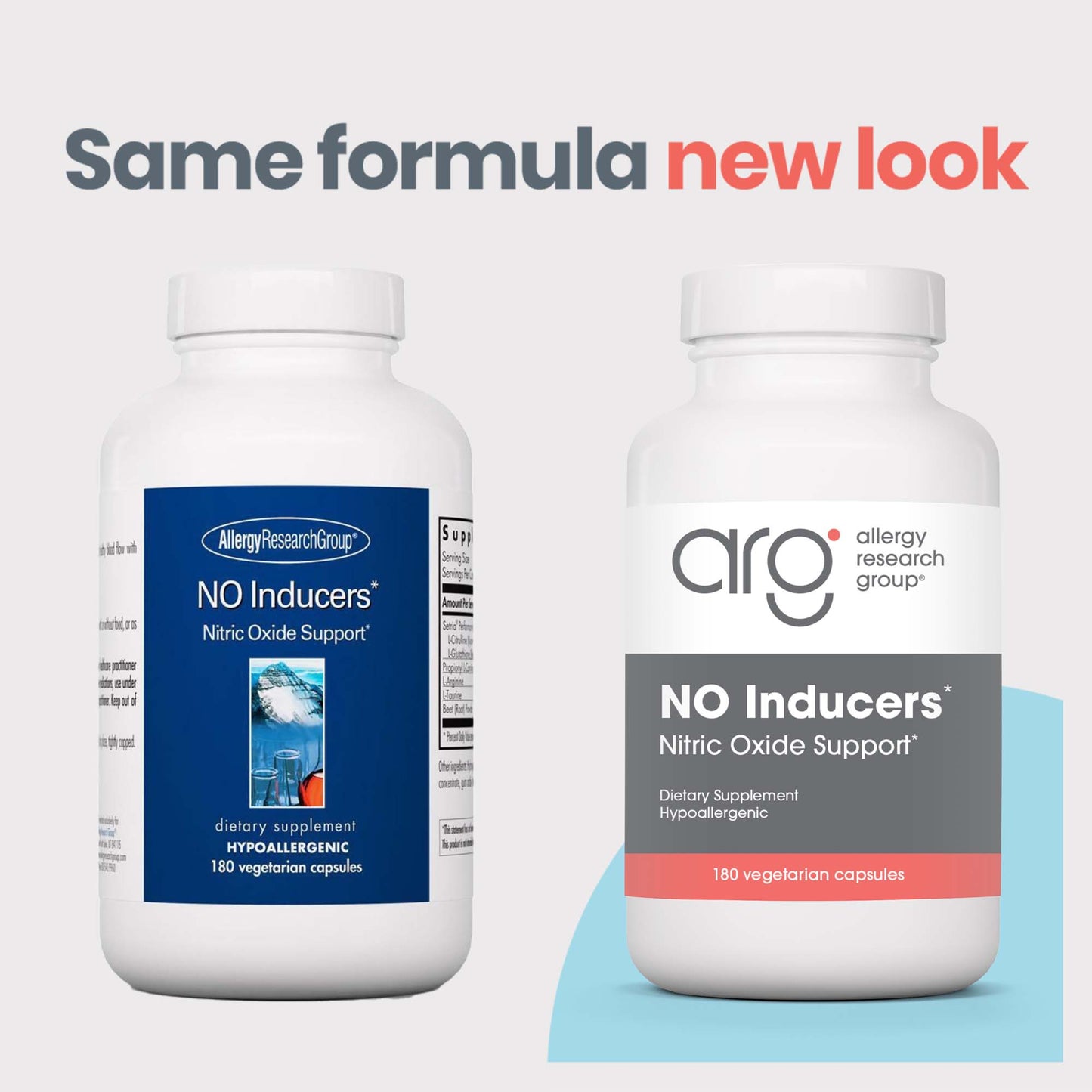













SKU:77480
NO Inducers*
NO Inducers*
Nitric Oxide Support*
Product Description
Couldn't load pickup availability







-
Ingredients -
Product Information -
Suggested Use
Ingredients:
Serving Size: 3 capsules
Servings Per Container: 60
Amount per serving:
Setria® Performance Blend: L-Citrulline (Kyowa Quality®), L-Glutathione (Reduced): 1.1 g
Propionyl-L-Carnitine: 250 mg
L-Arginine: 125 mg
Taurine: 25 mg
Beet (Root) Powder: 250 mg
Other Ingredients:
Hydroxypropyl methylcellulose, microcrystalline cellulose, rice hull concentrate, gum arabic, sunflower oil.
Promotes Endogenous Nitric Oxide Production for Vascular and Metabolic Support*
What It Does
NO Inducers is a targeted formula designed to promote the body’s own production of nitric oxide (NO), a vital signaling molecule involved in vasodilation, blood flow, and cellular communication.* Supporting healthy NO levels contributes to cardiovascular function, oxygen delivery, and metabolic performance across tissues.*
How It Works
• Setria® glutathione and L-citrulline: Clinically studied at 2.2 grams daily, this blend significantly enhances flow-mediated dilation (FMD) and NO bioavailability compared to placebo and high-dose citrulline alone.*[1-2]
• Glutathione (GSH): Helps preserve nitric oxide activity by preventing uncoupling of nitric oxide synthase, which otherwise leads to oxidative stress.*[3]
• L-Citrulline: A highly bioavailable precursor to L-arginine that supports long-lasting NO synthesis through conversion in the urea cycle.*
• Propionyl L-Carnitine: Promotes endothelial nitric oxide synthase (eNOS) activity and mitochondrial energy production; supports vascular function and exercise capacity.*[4-7]
• L-Arginine: The primary precursor for nitric oxide production, shown to support blood pressure and vascular tone.*[8-10]
• L-Taurine: Helps maintain nitric oxide levels by lowering ADMA, an endogenous inhibitor of NO synthesis; supports endothelial function.*[11-12]
• Beetroot Powder: Provides nitrates and betalains, which the body can convert to nitric oxide to support circulation and vascular function.*[13]
Who It’s For
This formula is ideal for adults seeking to support vascular health, nitric oxide production, and oxygen delivery, especially through normal aging, physical training, or under conditions of oxidative stress or endothelial needs.*
Special Features
NO Inducers features the clinically validated glutathione and L-citrulline bland and combines amino acids, botanicals, and antioxidant nutrients known to sustain NO levels and promote endothelial signaling without the need for high-dose single-agent interventions.*
References
1. Figueroa A, et al. Nutrients. 2023;15(7):1557. doi:10.3390/nu15071557
2. McKinley-Barnard S, et al. J Int Soc Sports Nutr. 2015;12(1). doi:10.1186/s12970-015-0086-7
3. Baldelli S, et al. Nutrients. 2019;11(10):2318. doi:10.3390/nu11102318
4. Ning WH, Zhao K. Vascul Pharmacol. 2013;59(3–4):76–82.
5. Tama B, et al. Cureus. 2021;13(8):e17592. doi:10.7759/cureus.17592
6. Kamoen V, et al. Cochrane Database Syst Rev. 2021;12(12):CD010117. doi:10.1002/14651858.CD010117.pub2
7. Elantary R, Othman S. Cureus. 2024;16(9):e70279. doi:10.7759/cureus.70279
8. Oyovwi MO, Atere AD. Euro J Med Chem Rep. 2024;12:100175. doi:10.1016/j.ejmcr.2024.100175
9. Dong JY, et al. Am Heart J. 2011;162(6):959–65.
10. Kuramochi Y, et al. Amino Acids. 2023;55(12):1949–64.
11. Guizoni DM, et al. Nitric Oxide. 2019;94:48–53.
12. Waldron M, et al. Curr Hypertens Rep. 2018;20(9). doi:10.1007/s11906-018-0881-z
13. Bahadoran Z, et al. Adv Nutr. 2017;8(6):830–8.
Suggested use:
As a dietary supplement, take 3 capsules two times daily, or as directed by a healthcare practitioner.
Warning:
If you are pregnant or lactating, have any health condition or are taking any medication, consult your healthcare practitioner before use. Use under medical supervision if taking nitrates or anti-hypertensive medications.
Store in a cool, dry place, tightly capped, away from light. Keep out of the reach of children. Use only if safety seal is intact. Variations in product color may occur.
Stay Connected
Sign up and we’ll keep you up to date on the latest news, clinical education resources, product innovations and promotions.
